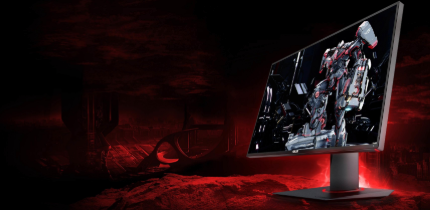Selecting the Right Monitor

Modern PC components are confusing, to say the least, even for those making regular changes to get the best in gaming. Choosing new screens, keyboards or and even a mouse comes with a range of options as technology advances. In most cases, we tend to buy the best our budgets allow but are it really what we need? More often than not, we tend to purchase the components that do way more than what we require, which is why we need the right details.
Monitors are expensive, and we usually choose the one that will best future proof. Looking at monitors, there’s a lot to consider, including refresh rates, resolutions, response times and more. Sure, we can take out a stack of cash and get a 4k display with 240 Hz and a 1 ms response time, but is it really what we need? Let’s start with the refresh rate. Most associate the number with performance as the Hz commonly appears with Pc chip speeds and graphic cards.
What is a Refresh Rate?
The refresh rate appears on the box with Hz. It’s usually 60Hz, 120Hz, 144Hz and so on. It has a significant effect on the price of the monitor as it refers to the number of times the screen refreshes in a second. Thus, a 60Hz screen refreshes 60 times per second, and a 144Hz screen does it 144 times per second. Most would think the highest number is best, but it all depends on what you’re planning to do with the monitor and what the device running the monitor is capable of.
What Difference it Makes
If you’re playing games at the highest possible settings and the PC can handle a high refresh rate, you’ll see a significant difference. However, it all comes down to how we process the information and how our brains make up for missing frames. We’ve all seen blurring. It caused by our minds as it tries to fill in the gaps of what we see on the monitor. If the frame rate is too slow, our brains make up for the motion on the screen by causing blurs. However, it doesn’t happen with everyone as some would see a significant difference between 60Hz and 120Hz while others wouldn’t quite understand what the fuss is all about.
If you experience blurs, chances are your monitor cannot keep up with the frames per second in the game. You might wonder why you can’t just fix the problem by decreasing the frame rate. Well, this would send even less information to the display for which your brain needs to fill in the blanks. If you do nothing but watch TV at 30 frames per second, don’t waste your time with a high refresh rate. If your game and your PC can run more top frames per second, try to find a display to match and enjoy super-smooth graphics.